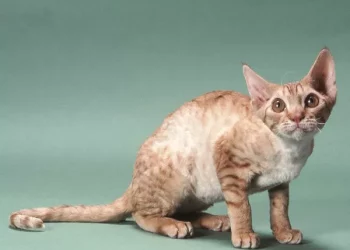Bengal cats are known for their unique appearance and playful personalities. They are a popular breed of cat due to their active nature and social behaviors. However, if you already have cats in your household, you may be wondering if a Bengal cat would be a good addition. In this article, we will explore whether Bengal cats are good with other cats.
Introduction to Bengal Cats
Before we delve into the question of whether Bengal cats are good with other cats, it’s important to understand the characteristics and temperament of the breed. Bengal cats are a unique and exotic breed that have become increasingly popular in recent years. Known for their distinctive spotted or marbled coat patterns and their energetic and playful personalities, Bengal cats make excellent companions for those looking for an active and engaging pet.
- Origins of the Bengal Cat
The Bengal cat breed was developed in the 1960s by breeding a domestic cat with a wild Asian leopard cat. The goal was to create a domestic cat with the appearance of a wild cat but with a more docile temperament. This hybridization produced a cat with a unique and striking appearance, with a muscular build, short hair, and spots or marbling reminiscent of a wild cat.
- Temperament and Personality
Bengal cats are known for their energetic and playful personalities. They are highly intelligent cats and require a lot of mental and physical stimulation to keep them happy and healthy. They are also very social and enjoy being around their owners, often following them around the house and demanding attention.
Bengal cats are active and curious, and enjoy exploring their environment. They are also very vocal and will often communicate with their owners through meows and other vocalizations. They are not typically lap cats, but will often sit near their owners and enjoy being petted and played with.
Bengals and Other Cats
When it comes to introducing a Bengal cat to a household with other cats, there are a few things to consider. Bengals can be very territorial and may not get along with other cats if they feel their space is being invaded. However, with proper socialization and introductions, Bengals can coexist peacefully with other cats.
It’s important to introduce the cats slowly and gradually. This means giving them time to adjust to each other’s presence before allowing them to interact directly. It’s also important to provide each cat with their own space and resources, such as food and water bowls, litter boxes, and beds.
Bengals may initially display aggressive or dominant behavior towards other cats. They may hiss, growl, or even swipe at the other cat. However, this behavior should subside as the cats become more comfortable with each other. If the aggressive behavior persists or becomes violent, it may be necessary to separate the cats and seek the advice of a veterinarian or animal behaviorist.
Factors that Affect Compatibility
Several factors can affect the compatibility of Bengal cats with other cats. One factor is the age of the cats. Kittens may be more accepting of a new cat than adult cats who may be set in their ways. Similarly, introducing a kitten Bengal to an older, established cat may be easier than introducing an adult Bengal to an older cat.
The temperament of the other cats in the household can also play a role. Cats that are more laid-back and less territorial may be more accepting of a new cat. However, cats that are aggressive or territorial may be less accepting and require more time and effort to introduce a new cat.
In addition, the gender of the cats can also play a role in their compatibility. Male cats are typically more territorial and may be less accepting of a new cat, while female cats are typically more social and may be more accepting.
It’s important to remember that every cat is unique and may have different compatibility levels with other cats. Some Bengal cats may be more accepting of other cats, while others may be more territorial and less accepting. It’s important to monitor the cats’ behavior and make adjustments as necessary to ensure their safety and well-being.
In conclusion, Bengal cats can be good with other cats if introduced properly and given time to adjust to each other. It’s important to provide each cat with their own space and resources and to introduce the cats gradually. Factors such as the age and temperament of the cats, as well as their gender, can also affect their compatibility. If you’re considering adding a Bengal cat to your household with other cats, it’s important to do your research and make sure you’re prepared to provide the necessary time and attention to properly introduce the cats and ensure their long-term compatibility.
Recommended reading:


























